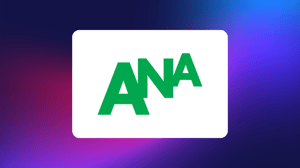Easily manage and organize your video library with a scalable solution built for streamlined control and delivery.

Jenn Chen: Why Video Advertising Needs a More Direct Supply Path
The dawn of streaming changed the game for video advertising. With more video inventory available now than ever before, how is the industry working to ensure buyers and sellers get what they need? What new technologies does the medium call for, and which legacy systems should be left behind?
The industry-wide trend of supply path optimization (SPO), which focuses on bringing publishers and advertisers closer together by cutting out intermediaries, is particularly relevant in video, where higher inventory prices call for increased deal transparency.
To set the burgeoning world of programmatic video advertising up for success, the ecosystem needs to work together to move toward more direct relationships as we await the depreciation of the third-party cookie.
Here's why the buy and sell sides must come together to chart a more direct path and, in so doing, maximize media value, boost technical efficiency to foster deal confidence and sustainability, and unlock contextual innovations that will help secure the future of privacy-safe video advertising.
Maximize Value with More Direct Relationships
From informal conversations to technical infrastructure, the road toward more direct relationships between publishers and advertisers starts with both parties coming to the table. It also requires taking a closer look at the intermediaries acting on your media deals to determine if any can be eliminated to shorten the chain between buyer and seller.
Bringing buyers and publishers closer together boosts value for both sides of the equation. Cutting down on intermediaries reduces each of those systems' tech fees, which are cutting into advertisers' ability to acquire premium inventory and publishers' ability to retain media revenue.
More direct relationships will empower advertisers and publishers alike to overcome the pain points of intermediaries. And nowhere is the opportunity to build something new more promising than around video inventory, where standards are far less defined than any other channel due to the relative nascence of the space.
Increase Efficiency to Boost Clarity and Sustainability
Beyond the immediate financial effects of intermediaries, media buyers have another problem. How can they be sure that what they're buying is really what they're looking for?
When a deal gets passed through countless intermediaries like a game of telephone, it's nearly impossible to retain sufficient clarity amid all that technical friction. Given video inventory's high price point, transparency is even more important because buyers have larger portions of their budget on the line.
More direct relationships around video inventory will allow publishers to provide clarity to media buyers around format, audience, and context, as well as assurances around deal viability. That clarity is worth a lot to buyers, who will be willing to pay higher prices if they know it's going toward the exact media they want.
And this efficient communication between buyers and sellers is also a boon to sustainability, as it means fewer servers being fired with every deal and fewer duplicative paths around every line item. In fact, sustainability is a major factor pushing the industry toward SPO and more direct deals.
Capitalize on Contextual Video
Another brewing factor pushing the advertising industry toward more direct deals is the deprecation of third-party cookies and increasing scrutiny around data privacy. For cookie-less success, advertisers and publishers are leaning into AI driven contextual targeting, which places ads using surrounding content to infer the audience rather than tracking the activities of readers and viewers.
Contextual video advertising is an area ripe for innovation, particularly as AI technologies continue to advance, but it requires buy and sell sides to first align on taxonomies and common denominators. Contextual advertising collaboration would be a natural extension of the move toward a more direct supply path.
Adtech intermediaries are not going to go away. They will still have a role to play in facilitating the ad targeting that finances much of the free and open internet. But their role is not to obscure the transaction between media buyer and seller and increase fees. It's to use their superior technology and know-how to provide value to both sides, thereby earning their cut. Helping advertisers and publishers establish a single source of truth and chart a more direct supply path would be one big step in the right direction.

